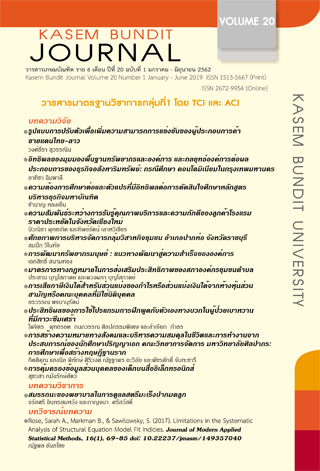Competency of Nursing Care Women’s Cervical Cancer
Keywords:
Competency, Nursing, Cervical CancerAbstract
Cervical cancer is the second only breast cancer. 85% are found in developing countries. Cervical cancer remains an important public health problem in Thailand. The main cause of cervical cancer is the human papillomavirus (HPV) infection. The primary screening by Pap smear in early detection of cervical cancer. Prevention cervical cancer by vaccinating HPV. Radiation therapy and chemotherapy makes cervical cancer patients more likely to survive, reduced complications and quality of life. Competency of Nursing to development, manage and supervise cervical cancer patients with complex health problems, collaborate with health team members, empowerment Including clinical counseling for cervical cancer patients, leadership change for improving cervical cancer nursing practice, use of knowledge, theory, principles, ethical decision in operation, use empathic evidence to cure cervical cancer. It can cause cervical cancer survivors, decreased complications and quality of life.
References
AbdAllah, et al. (2016) Awareness and attitudes of nursing students towards prevention of
cervical cancer. Cervical Cancer. 1:107.
Ali CI, et al. (2016). Cervical cancer: a health limiting condition. Gynecology Obstetric.
6:378.
Comprehensive Cervical Cancer Prevention and Control. (2011). Program guidance for countries, UNFPA. from: eeca.unfpa.org/.../ENGLISH%20Cervical%20Cancer%20Guidance.pdf.
da Fonseca AJ, et al. (2013). Cost-effectiveness of primary and secondary prevention strategies for cervical cancer in brazil: A systematic review. Gynecology Obstetric. 3:169.
Deverakonda, A and Gupta, N. (2016). Diagnosis and Treatment of Cervical Cancer: A
Review . Research and Reviews Journal of Journal of Nursing and Health Sciences. 2:3. 1-11.
El-Moselhy, E.A., Borg, H.M., Atlam, S.A. (2016). CervicalCancer: Sociodemographic and
Clinical Risk Factors among Adult Egyptian Females. Advance Oncology Research Treatment. 1: 106.
Ferlay J, Shin HR, Bray F, Forman D, Mathers C, et al. (2012). Cancer incidence and
mortality worldwide: IARC Cancer Base No. 10 [Internet]. Lyon, France: International Agency for Research on Cancer.
Matthews AK, et al. (2013). Breast and cervical cancer screening behaviors of African
American sexual minority women. Journal General Practice. 1:107.
Organized cancer screening in Alberta (2015). Calgary: Alberta Health Services. Available:
from:
www.screeningforlife.ca/images/reports/Organized_Cancer_Screening_in_Alberta_2015_Report.pdf (accessed 2015 Nov. 10).
Sahli N, et al. (2016). Impact of brachytherapy in the treatment of locally advanced
cervical cancer: results from a single institution. Gynecology Obstetric. 6: 386.
Sarwar A, et al. (2016). Novel benchmark database of digitized and calibrated cervical cells for artificial intelligence based screening of cervical cancer. Cervical Cancer. 1: 105.
Thaihealth. (2016). Cacinoma Cancer. from: https://www. thaihealth.or.th.
The Nursing Council of Thailand. (2009). Competency of Nurse. from:
https://www.tnc.or.th/files/2016/09/page-44708/__28294.pdf.
World Health Organization. 2014. publication Implementation tools : package of
Essential non communicable (PEN) disease interventions for primary health
care in low-resource settings. from: http ://www.who.int/nmh/ncd-to
Downloads
Published
How to Cite
Issue
Section
License
ทัศนคติ ความคิดเห็นใด ๆ ที่ปรากฏในวารสารเกษมบัณฑิตฉบับนี้เป็นของผู้เขียน โดยเฉพาะ มหาวิทยาลัยเกษมบัณฑิตและบรรณาธิการ ไม่จำเป็นต้องมีความเห็นพ้องด้วย







